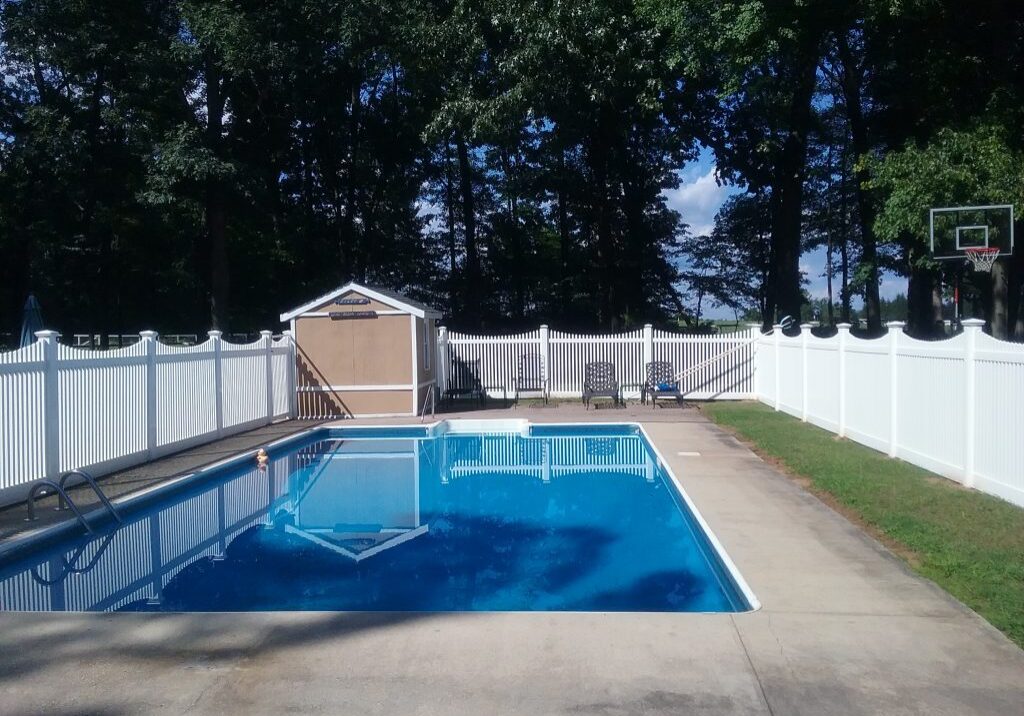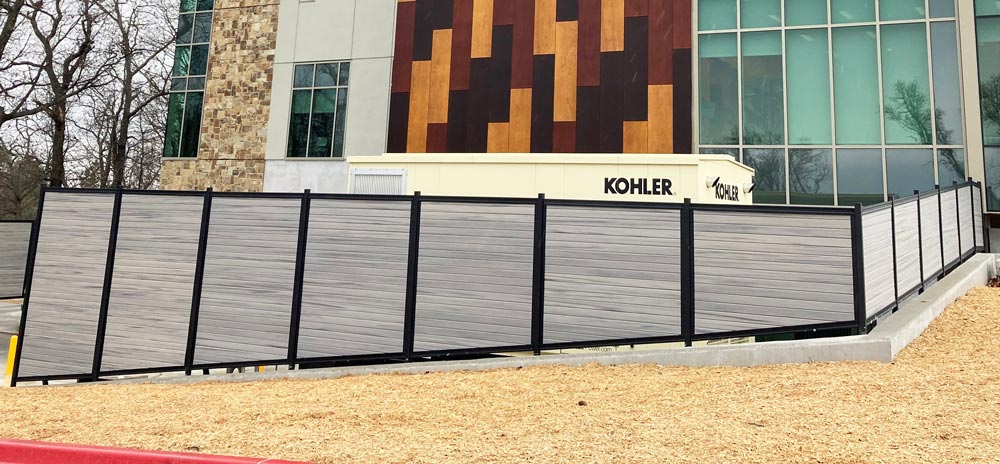All Categories
Featured
Choosing environmentally liable fence materials assists decrease your carbon footprint and sustains preservation efforts. Let's discover some of the finest environmentally friendly fence choices that advertise sustainability while likewise providing resilience and design.
Benefits: Bamboo needs marginal water, pesticides, and plant foods to grow. It is naturally degradable, reducing waste at the end of its life process. It is additionally sturdy and resistant to rot, making sure long life with correct treatment. Considerations: Bamboo may not be optimal for locations with rough winters months or severe chilly, as it can come to be weak and fracture in freezing temperature levels. 2. Recycled Materials Fence. Fences made from recycled products, such as post-consumer plastics, recovered wood, or recycled steel, are coming to be increasingly popular in eco-conscious styles. These materials lower waste, save resources, and lessen the requirement for the extraction of resources, which is helpful for the setting. By repurposing existing materials, you contribute to lowering the demand for brand-new, energy-intensive manufacturing procedures.
Perks: Using recycled products assists draw away waste from landfills, decreases ecological impact, and can decrease your carbon impact. It is likewise a cost-effective remedy sometimes. Considerations: The visual of recycled product fences can differ, and some may not accomplish the same natural look as typical wood fences. Lots of suppliers now use layouts that reproduce the look of wood or stone. 3. Composite Secure fencing. Composite fencing is made from a combination of timber fibers and plastic, typically sourced from recycled material. This sort of fence supplies the look of timber with very little upkeep, while likewise being environmentally pleasant. Compound materials are commonly long-lasting and immune to the components, minimizing the demand for frequent replacement or treatment with chemicals.
![]()
Advantages: Compound fences are resilient, low-maintenance, and can be made from recycled web content, helping in reducing waste. They do not need hazardous chemicals for conservation, unlike treated wood. Factors to consider: While composite fencing is sturdy, it has a tendency to be more expensive ahead of time contrasted to traditional timber. Its longevity and low upkeep may make it an extra cost-efficient option over time. 4. Cedar and Redwood Secure Fencing. Cedar and redwood are preferred options for environmentally-conscious fence, as both materials are naturally durable, resistant to decay, and call for marginal chemical therapies. These timbers can be sustainably collected from responsibly taken care of woodlands, guaranteeing their green standing. They additionally have a natural elegance that many homeowners appreciate, with abundant shades and appearances that improve visual charm.
Advantages: Cedar and redwood fencings are resilient, naturally pest-resistant, and have a low ecological influence when gathered sustainably. They also have a classic visual and can mix flawlessly into all-natural landscapes. Factors to consider: While cedar and redwood are much more environment-friendly than other sorts of wood, they are still wood items and require proper maintenance to avoid degeneration. The cost may additionally be higher contrasted to various other materials. 5. Living Fences (Hedges and Hedges) For those seeking a much more natural and eco-friendly option, living fences, or hedges, are an excellent choice. Popular options for living fencings include bamboo, privet, and boxwood.
Benefits: Living fencings improve air top quality, add to biodiversity, and provide a natural look that mixes perfectly with the landscape. They likewise reduce noise air pollution and assist control temperatures in your yard. Factors to consider: Living fences call for routine upkeep, such as pruning and watering, and might not be appropriate for each environment. They also require time to develop before they can offer complete privacy. 6. Stone and Brick Secure Fencing (Recovered) Stone and brick are unbelievably resilient products, and utilizing reclaimed stone or brick can be a green means to create a fence. By reusing these products from old structures or frameworks, you minimize the need for new resources and decrease waste. Rock and brick fencings are strong, call for little maintenance, and offer an ageless seek to any property.
![]()
Perks: Reclaimed rock and brick fencings are extremely lasting, low-maintenance, and offer superb privacy and safety. They are additionally energy-efficient, as they aid control temperature level by functioning as all-natural insulators. Factors to consider: Installment of stone and brick fences can be a lot more pricey and labor-intensive than other materials. In addition, these fencings might not be appropriate for all homes due to the weight and the demand for appropriate setup. Final thought. Bamboo, recycled products, composite secure fencing, and cedar or redwood all offer sustainable alternatives to standard products. By picking one of these lasting secure fencing products, you're making a favorable effect on the atmosphere while developing a stunning and functional outdoor location.
- Bamboo Secure fencing. Bamboo is one of the most environmentally friendly products offered for secure fencing. Bamboo fencings are solid, naturally resistant to pests, and supply a gorgeous, natural visual.
Benefits: Bamboo needs marginal water, pesticides, and plant foods to grow. It is naturally degradable, reducing waste at the end of its life process. It is additionally sturdy and resistant to rot, making sure long life with correct treatment. Considerations: Bamboo may not be optimal for locations with rough winters months or severe chilly, as it can come to be weak and fracture in freezing temperature levels. 2. Recycled Materials Fence. Fences made from recycled products, such as post-consumer plastics, recovered wood, or recycled steel, are coming to be increasingly popular in eco-conscious styles. These materials lower waste, save resources, and lessen the requirement for the extraction of resources, which is helpful for the setting. By repurposing existing materials, you contribute to lowering the demand for brand-new, energy-intensive manufacturing procedures.
Perks: Using recycled products assists draw away waste from landfills, decreases ecological impact, and can decrease your carbon impact. It is likewise a cost-effective remedy sometimes. Considerations: The visual of recycled product fences can differ, and some may not accomplish the same natural look as typical wood fences. Lots of suppliers now use layouts that reproduce the look of wood or stone. 3. Composite Secure fencing. Composite fencing is made from a combination of timber fibers and plastic, typically sourced from recycled material. This sort of fence supplies the look of timber with very little upkeep, while likewise being environmentally pleasant. Compound materials are commonly long-lasting and immune to the components, minimizing the demand for frequent replacement or treatment with chemicals.

Advantages: Compound fences are resilient, low-maintenance, and can be made from recycled web content, helping in reducing waste. They do not need hazardous chemicals for conservation, unlike treated wood. Factors to consider: While composite fencing is sturdy, it has a tendency to be more expensive ahead of time contrasted to traditional timber. Its longevity and low upkeep may make it an extra cost-efficient option over time. 4. Cedar and Redwood Secure Fencing. Cedar and redwood are preferred options for environmentally-conscious fence, as both materials are naturally durable, resistant to decay, and call for marginal chemical therapies. These timbers can be sustainably collected from responsibly taken care of woodlands, guaranteeing their green standing. They additionally have a natural elegance that many homeowners appreciate, with abundant shades and appearances that improve visual charm.
Advantages: Cedar and redwood fencings are resilient, naturally pest-resistant, and have a low ecological influence when gathered sustainably. They also have a classic visual and can mix flawlessly into all-natural landscapes. Factors to consider: While cedar and redwood are much more environment-friendly than other sorts of wood, they are still wood items and require proper maintenance to avoid degeneration. The cost may additionally be higher contrasted to various other materials. 5. Living Fences (Hedges and Hedges) For those seeking a much more natural and eco-friendly option, living fences, or hedges, are an excellent choice. Popular options for living fencings include bamboo, privet, and boxwood.
Benefits: Living fencings improve air top quality, add to biodiversity, and provide a natural look that mixes perfectly with the landscape. They likewise reduce noise air pollution and assist control temperatures in your yard. Factors to consider: Living fences call for routine upkeep, such as pruning and watering, and might not be appropriate for each environment. They also require time to develop before they can offer complete privacy. 6. Stone and Brick Secure Fencing (Recovered) Stone and brick are unbelievably resilient products, and utilizing reclaimed stone or brick can be a green means to create a fence. By reusing these products from old structures or frameworks, you minimize the need for new resources and decrease waste. Rock and brick fencings are strong, call for little maintenance, and offer an ageless seek to any property.

Perks: Reclaimed rock and brick fencings are extremely lasting, low-maintenance, and offer superb privacy and safety. They are additionally energy-efficient, as they aid control temperature level by functioning as all-natural insulators. Factors to consider: Installment of stone and brick fences can be a lot more pricey and labor-intensive than other materials. In addition, these fencings might not be appropriate for all homes due to the weight and the demand for appropriate setup. Final thought. Bamboo, recycled products, composite secure fencing, and cedar or redwood all offer sustainable alternatives to standard products. By picking one of these lasting secure fencing products, you're making a favorable effect on the atmosphere while developing a stunning and functional outdoor location.
Latest Posts
Find Out Reduce Expenses on Car Maintenance with Montclare Auto Repair’s Limited-Time Deals
Published May 31, 25
1 min read
Explore Special Auto Repair Deals in Chicago at Montclare Auto Repair
Published May 30, 25
1 min read
Discover the Premier Auto Repair Offers in Montclare, Chicago
Published May 25, 25
1 min read
More
Latest Posts
Find Out Reduce Expenses on Car Maintenance with Montclare Auto Repair’s Limited-Time Deals
Published May 31, 25
1 min read
Explore Special Auto Repair Deals in Chicago at Montclare Auto Repair
Published May 30, 25
1 min read
Discover the Premier Auto Repair Offers in Montclare, Chicago
Published May 25, 25
1 min read